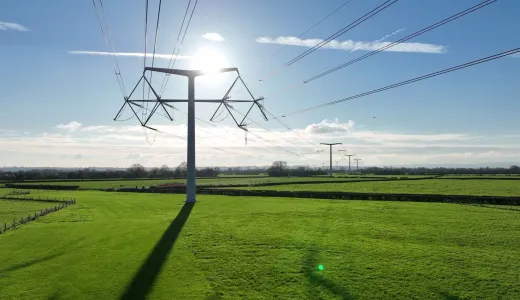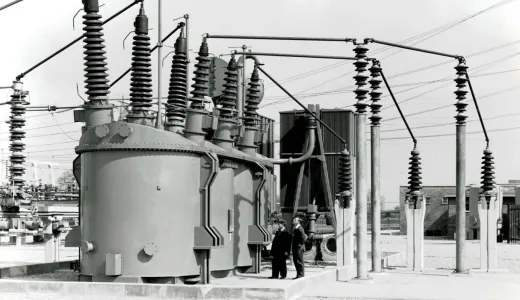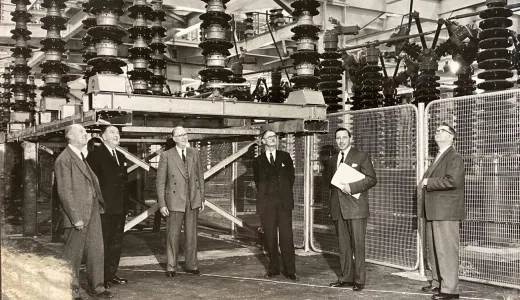Near a small village in Nottinghamshire, Britain’s 275kV supergrid was switched on for the first time 70 years ago. Discover the places that played host to the early supergrid.
The switch on at Staythorpe
On 15 July 1953, before an assembled crowd at Staythorpe 132kV substation in Nottinghamshire, Sir John Hacking mounted a temporary platform with a control desk linked by telecoms to Birmingham area grid control.
At 12.53pm he pushed a button to close the circuit breaker, energising part of the electricity grid – a 40 mile overhead line to West Melton near Sheffield – at 275kV for the first time ever. Britain’s supergrid was live.
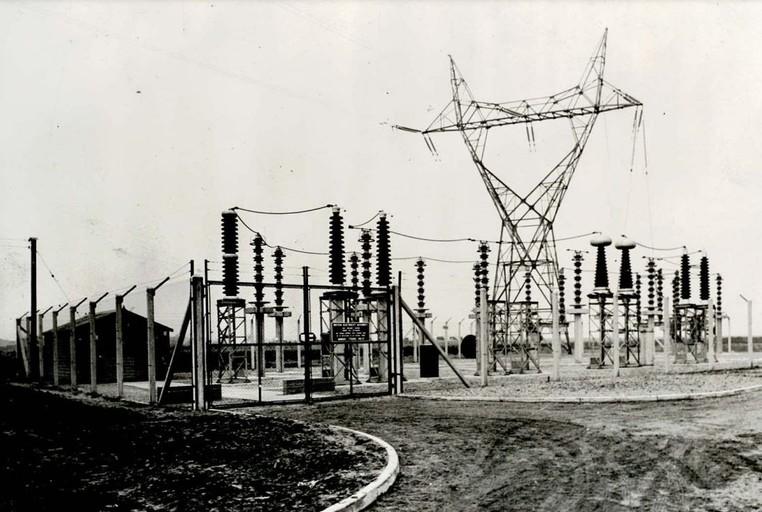
The new route between Staythorpe and West Melton had already been under construction as an experimental line to evaluate new technologies. It was the first of a series of new 275kV lines which, once energised, have been in service ever since (save for maintenance).
Today, just seven miles away from Staythorpe substation at our Eakring training centre, National Grid apprentices and energy industry professionals are learning the net zero and engineering skills that will help take Britain into its clean energy future.
Megawatt Valley
Staythorpe and the Trent valley area was important to the supergrid for a reason. In 1950, Staythorpe A power station had been commissioned – the first of a series of power plants sited along the River Trent which would be fuelled by East Midlands coal.
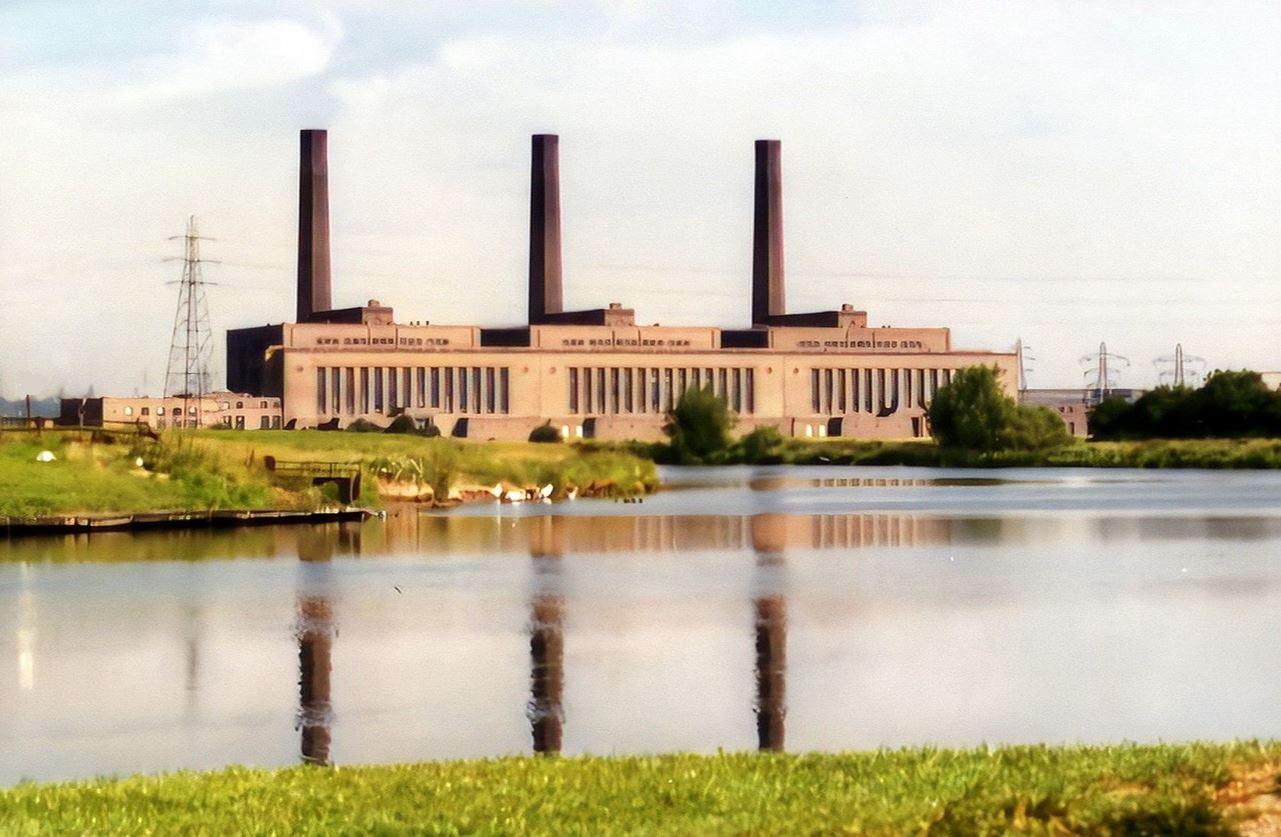
To economically meet rapidly growing demand for electricity, the newly nationalised supply industry built the big power stations close to coalfields and water, on the basis that it would be cheaper to transmit electricity over long distances than it would be to transport coal.
With demand centres far away in the big cities, the idea of the supergrid was born – and quickly made a reality.
Find out more about the technology behind the early supergrid
Much of the coal would be mined in the East Midlands, Yorkshire and the northeast, with the power largely consumed in London, the southern counties, Manchester and Merseyside.
Over the subsequent decades, the central role the Trent valley area played in powering Britain – enabled by the creation of the supergrid – earned it the epithet ‘Megawatt Valley’.
A capital idea
The chief role of the supergrid up to 1960 was to deliver power from new coal plants in the Trent valley over 125-mile-long lines into the outskirts of London.
New power stations at Staythorpe, Castle Donnington, Willington and Drakelow in the East Midlands had direct connections via new supergrid circuits to substations in the north and west of London, with lines also heading northwards via the north east coast and Carlisle to Scotland. It was the first time such long-distance electricity transmission had been possible in Britain.
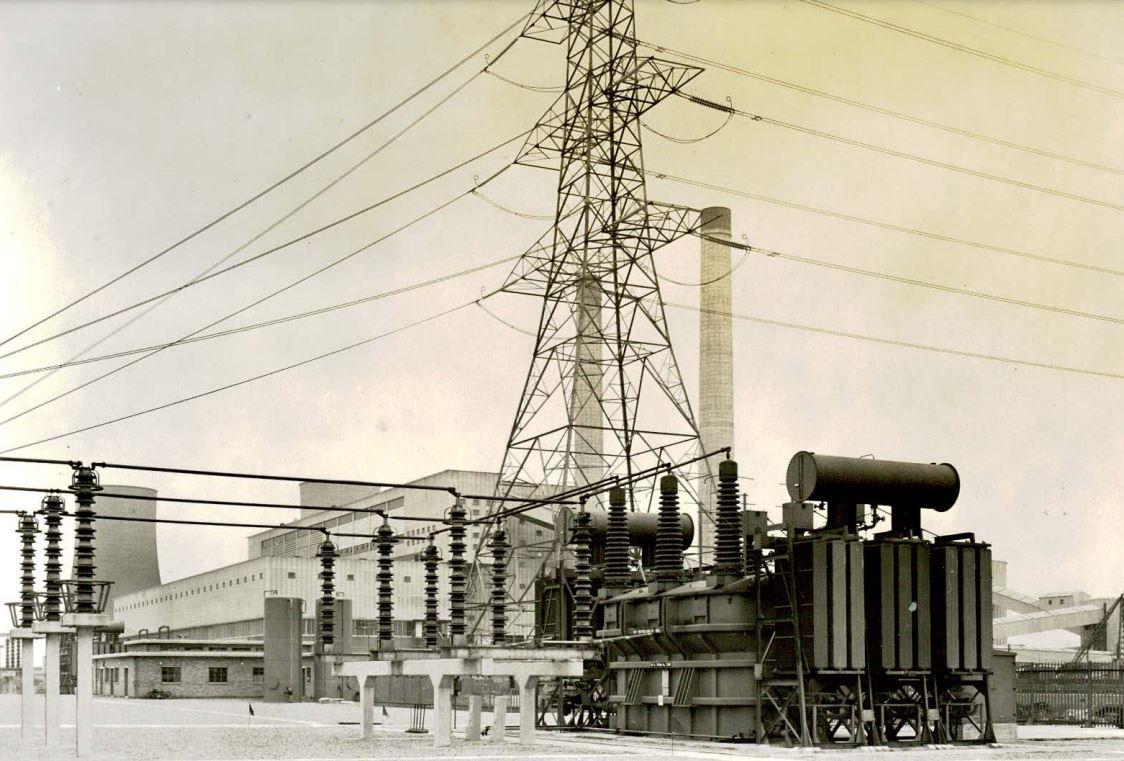
In London itself, the network in time benefitted from two 275kV rings around the capital, which served the city for decades. The first phase of our London Power Tunnels project saw some of the first cable circuits replaced in 2016 with high capacity 400kV circuits housed in deep tunnels – and work continues today on London Power Tunnels to rewire more of the network, ensuring clean, secure and affordable energy for the capital.
Our grid today
The original supergrid is a story of remarkable engineering prowess and transition. At National Grid we’ve invested billions over recent decades to continue innovating and evolving the transmission network, and today we’re embarking on the Great Grid Upgrade – the biggest overhaul of our electricity grid in generations.
Where the early supergrid was built around the power plants of the Midlands, tomorrow’s network will take a different shape, connecting us to clean energy beyond our shores – meaning new infrastructure, in new places.
Today, new technology and innovation is already driving that clean energy transition. From connecting homes and businesses to new offshore wind from the North Sea, to our new T-pylons in southwest England which are bringing low carbon electricity to millions, we’re building the next supergrid to help Britain reach net zero.
